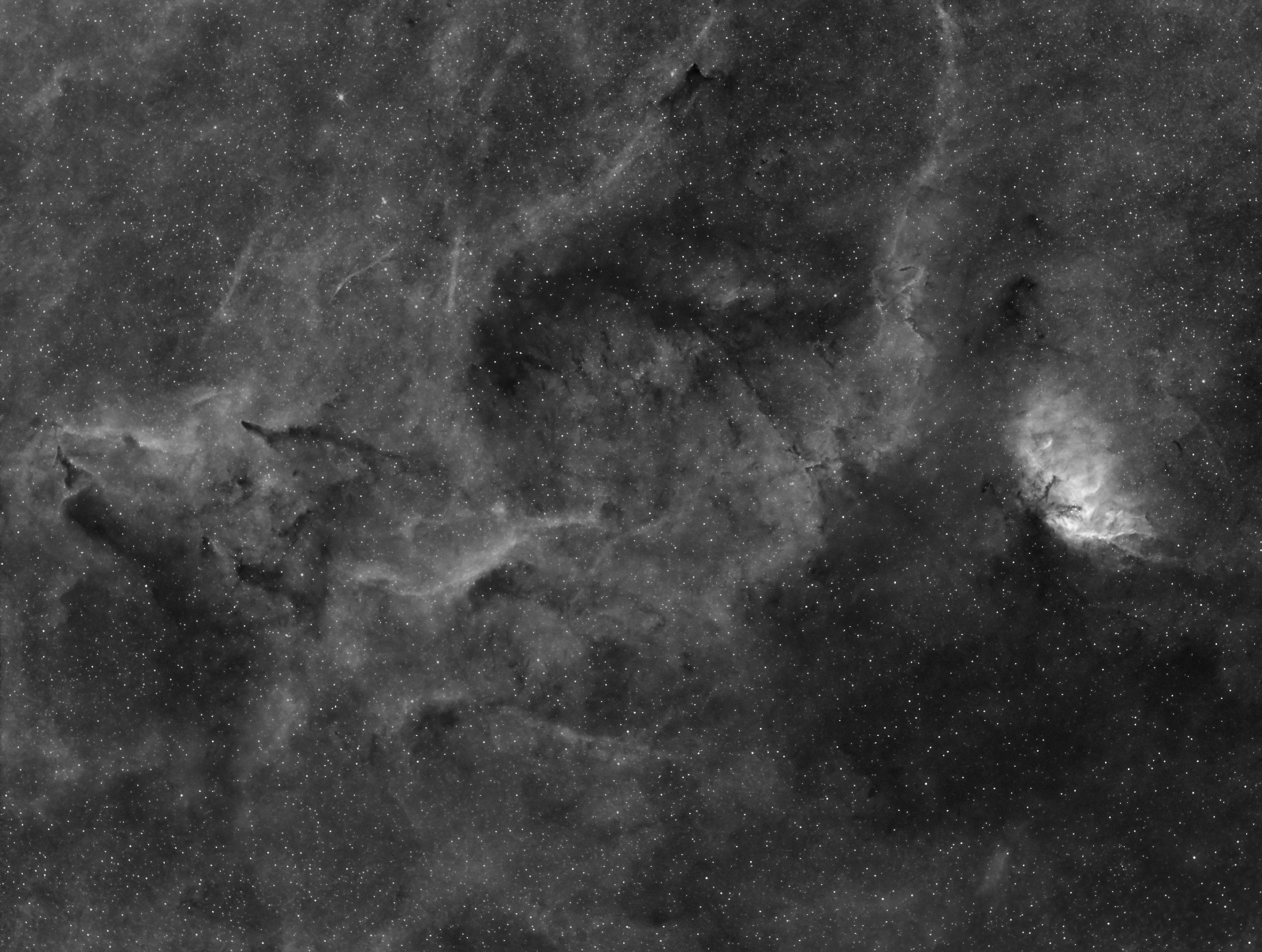
Move your mouse over the image above (on smartphones or tablets: touch it) to get a version with stars removed.
Sharpless 101, located near the right edge of this image, is an emission nebula located in the constellation Cygnus. The emission of the Tulip Nebula is excited by ultraviolet radiation of the hot young star HD 227018 in its center. It somewhat resembles a tulip seen from its side. Sh2-101 lies at a distance between 6,000 and 8,000 light years from Earth. An interesting feature of the Tulip Nebula is its close proximity (from our viewpoint on Earth) to the galactic X-ray source Cygnus X-1, which is one of the strongest X-ray sources known, and widely accepted to be a black hole. It was discovered in 1964.
NGC 6871 and the nebula surrounding it occupy the left part of this image. NGC 6871 is a small, young open star cluster with less than 50 members, most of which are blue and white stars in a rather loose formation, hardly conspicuous in this image. The nebula surrounding it contains a lot of interesting structure: Dark lanes and bright shock fronts traverse through interstellar matter. One of the dark lanes near the top of this image bears the designation Barnard 146, one of the dark lanes on the left side Barnard 147.
 Sh2-101 - Tulip Nebula and Environment, which this image is part of;
Sh2-101 - Tulip Nebula and Environment, which this image is part of;
 Sh2-101 - Tulip Nebula in Hα, Newtonian CMOS image.
Sh2-101 - Tulip Nebula in Hα, Newtonian CMOS image.
Exposure Data